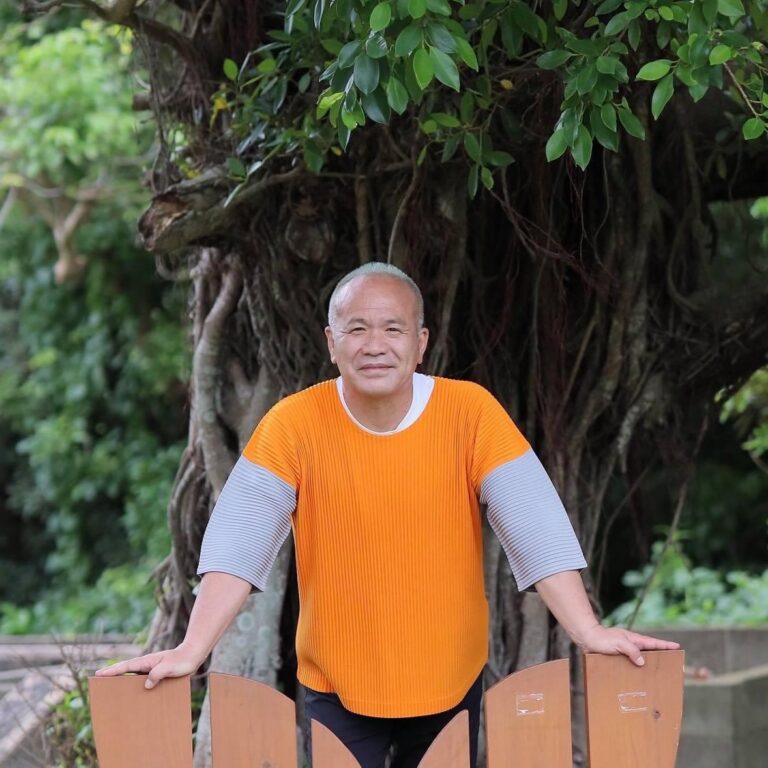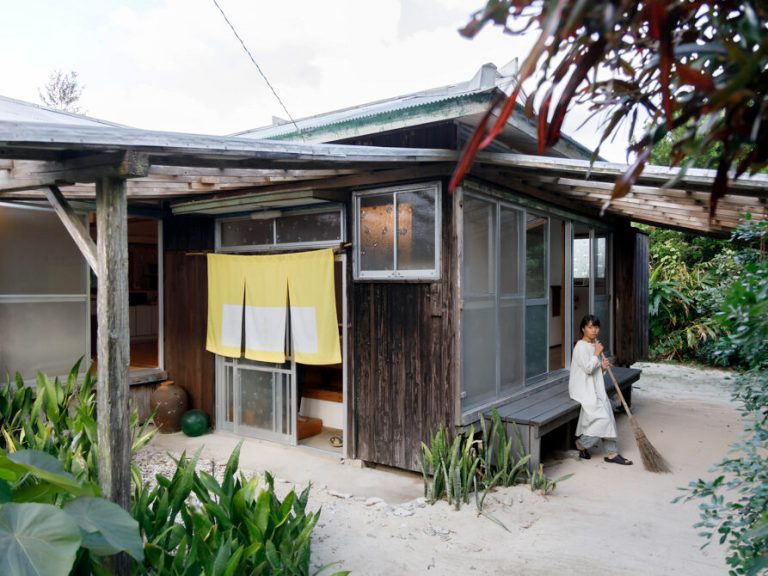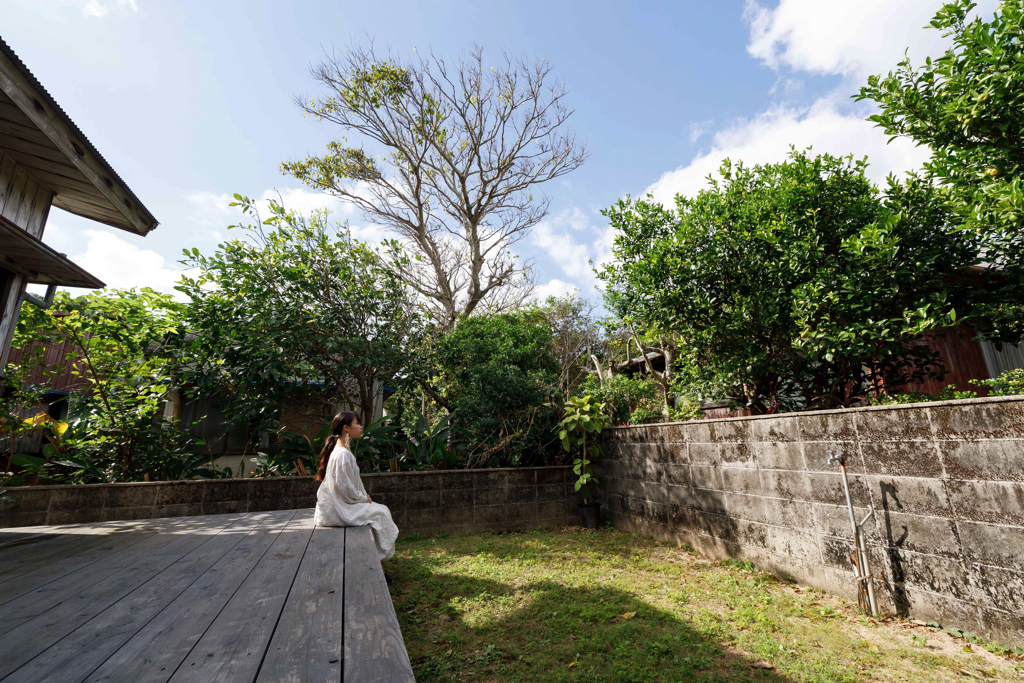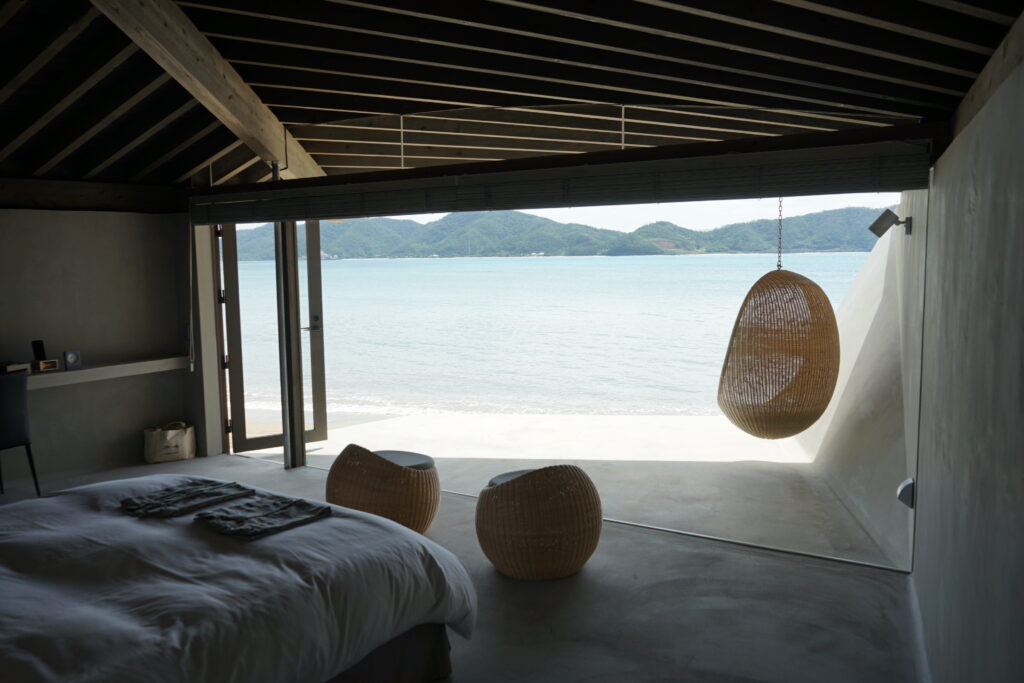
The Amami Islands villages, where no one is left behind.
Yasuhiro Yamashita is one of the few people who are listening to the voices of nature, cherishing life, and paying attention to even the smallest details. In his statement, Yamashita said: “Everything has a meaning of existence, and we try to listen to its voice with a neutral mind. It can be the voice of the soil and plants, or the voice of a small village, or the voice of the people and nature of various regions.” The quality of Yamashita’s soul sets him apart from other architects. His intention is to create a society where no one is left behind.
He heard the voices of the forgotten and almost abandoned villages of the Amami Islands, villages that lost their names and hope. He focused on the restoration of their lost identity by sustaining the “village culture” of the islands, which is one of the most diverse in the world. He built a network based on small villages and established new relationships with visitors for tourism.
“I believe that the way to create a sustainable society is to uncover, enhance, and develop the unique characteristics of each village. The time has come for humans to get closer to nature.”
He restored what should have been lost to history, gave a second life to old buildings, and brought an exciting and creative lifestyle to the remaining villagers. He also created a new architectural complex on the shore of the bay, which hospitably invites tourists or visitors to take a break from the hustle and bustle of everyday city worries.
His architectural approach is characterized by simplicity, cohesion with the environment, harmony of the individual, and finely elaborated elements that exist in balance without a forced hierarchy. He approaches every setting and its challenges with calm, quietness, and moderation. His unique construction is done with high craftsmanship. Yasuhiro Yamashita’s application of traditional and contemporary style is a unity of lyrical and practical components in architecture.
Yasuhiro Yamashita continues to contribute his work, time, and compassion to change the consciousness of people and society through a paradigm shift to make a society where no one is left behind.
"STRIPES, PEOPLE, AND SOULS"
In the Amami dialect, the villages are called “shima”, and the culture built by the “people” who live in each village remains as “takara”.
Amami Oshima, which was registered as a World Natural Heritage Site in 2021, has a magnificent nature that has been passed down from ancient times. On top of that, the fact that there are about 360 different settlement cultures left for hundreds of years is a very valuable example in the world and is a great pride of the island.
“I thought that it was my important mission to connect it to the next generation and to convey the charm of Amami to the world, so I decided to establish this “Shima, Hito, Takara”.



INTERVIEW WITH MR. YASUHIRO YAMASHITA
ARC. What inspired you to become an architect?
Y.Y. I have always loved making things and was fascinated by art ever since I was a child.
ARC. An architect and architecture to some extent are a special phenomenon in our world. It is a phenomenon with a certain vision and energy of the creation of a new world or specific atmosphere of life. In connection with this phenomenon, we would like to ask you, what is architecture for you?
Y.Y. My vision as an architect is to concern myself with the design of our society through architecture and all the energy architecture can bring to our towns and villages.
I excel in searching out the potential and possibilities of each site and region and derive new energy.
ARC. We often discover that architecture evokes different moods in us. Many times it even affects the surrounding nature. But there is also architecture that is full of light and beauty in which we fit naturally and harmoniously. This type of architecture brings us joy.
Have you personally had such an experience? And how important is this for you? Do you take this matter into account in your own creative process?
Y.Y. I was born on Amami Oshima Island, a place near the southernmost tip of Japan, which was registered as a World Natural Heritage site in 2021.
Since I was a child, I have lived in harmony with the mountains, sea, plants, and animals and I feel I have received various energies from them. This experience has led me to believe, that my mission is to create architecture and communities that are in harmony with nature, and to sustain the culture nurtured by its long history.
ARC. Can an architect change the negative atmosphere of a place into a positive one? Have you ever tried or done this?
Y.Y. Architecture can definitely change the negative atmosphere of a place into a positive one. That, I believe is the quintessential mission of architects. I have engaged myself with the 300 or more buildings I have been involved in with this attitude.
ARC. The average European and American person does not quite understand how architecture can become organic, ecological, and how it can fit into the living natural world and even become a sacred part of it. The Japanese Shinto tradition demonstrates great and colorful examples of such an approach to us. I noticed that in some of your architectural projects there is a tendency based on these traditions. Is this so?
Y.Y. It is exactly as you say. In Japan, there is the concept of “eight million gods,” which means in everything you see in the natural world, there is god. My goal as an architect is to take utmost care of these entities in order to create buildings that are close to nature.
ARC. The modern trend of the globalist movement through education, media, and nihilistic worldviews ignores the traditional experience and wisdom of our ancestors and leaves the younger generations without a foundation. What would happen to the Japanese creative world if someone were to uproot all of the spiritual, traditional, and historical roots that have nourished Japanese culture for millennia and have given people the strength to live and inspiration to create? Is there any way to avoid this for Japanese people?
Y.Y. I find it hard to answer this question, because I cannot put myself to believe such a situation ever happening.
ARC. What guides you in your creative process? (Such as inspiration from something, an essential philosophy, professional experience, or intuition, etc.?)
Y.Y. Philosophy, Zen-like thought and what I learned from nature in my adolescence.
ARC. What is your most important project that satisfied you?
Y.Y. A project I am currently working on in the Amami islands. It is a community development project centered on a lodging facility called “Den-paku”.
Below is the Den-paku website.
【公式】伝泊ブランドサイト | 奄美に暮らすように泊まる。 (den-paku.com)
ARC. What kind of future projects do you dream about creating?
Y.Y. I would like to rediscover the potential of the area and implement projects that will contribute to its revitalization.
ARC. Mr. Yasuhiro Yamashita, thank you for the interview and for your valuable time.
伝泊 The Beachfront MIJORA
Since 2010, the demand for accommodations for the wealthy has been increasing, partly due to the increase in inbound tourists. In particular, Amami had few high-class accommodations so far, so it was necessary to prepare a saucer before it was registered as a World Natural Heritage Site. “Denpaku The Beachfront MIJORA” was planned as a high-end facility to meet the demand.
A total of 13 villa-style accommodations are located on two west-facing sites along the northern coast of Amami. What is common to all buildings is a structure in which a wooden roof, which is a modern reinterpretation of Amami’s traditional architectural style, is placed on a concrete skeleton with a powerful shape reminiscent of origami, and is the largest glass that can be used in Amami. A large opening connects the internal space with the sea.

